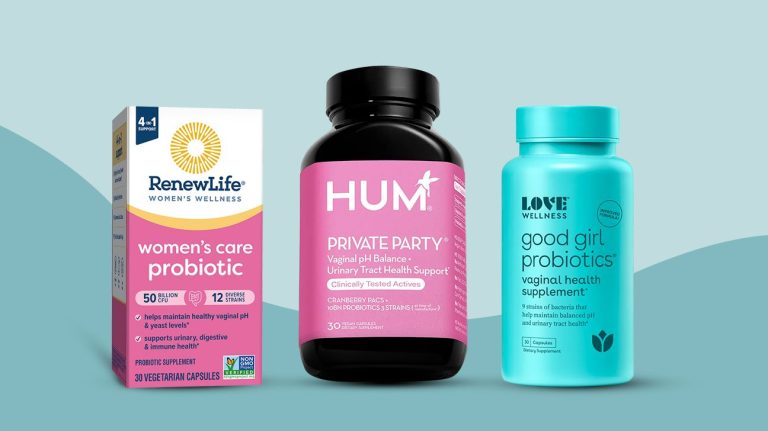9 Best Reverse Osmosis Water Filter Systems for Clean and Safe Drinking Water
Clean, pure water is essential for your health, and reverse osmosis (RO) water filter systems are among the most effective ways to achieve it. With so many options on the market, finding the right system for your needs can feel overwhelming. That’s why we’ve researched and compiled a list of the 9 best reverse osmosis water filter systems to help you make an informed choice.
Whether you’re looking to remove contaminants, improve taste, or ensure your family’s safety, our guide will point you in the right direction. From budget-friendly picks to high-end models, there’s something for everyone. Dive in to discover which RO system suits your home best.
Considerations Before Choosing a Reverse Osmosis System
Choosing the right reverse osmosis system can be a game-changer for your home. Consider these factors to make an informed decision.
Understanding Your Water Filtration Needs
Analyze your water quality. Conduct a water test to identify specific contaminants. Determine whether you’re dealing with heavy metals, chlorine, fluoride, or other pollutants. Different RO systems excel in removing certain impurities, so match your needs with the system’s capabilities. For example, if you have high levels of lead, ensure the system effectively targets lead removal.
Space and Installation Requirements
Evaluate your available space. Measure the area under your sink or wherever you plan to install the system. Some systems are compact, while others require more room. Check the installation process: some systems offer DIY installation, while others might need professional help. Consider systems with easy filter replacement to save time and hassle in the long run.
Review of the Top 9 Best Reverse Osmosis Water Filter Systems
Discovering the best reverse osmosis (RO) water filter systems to ensure clean and safe drinking water can be a game-changer for your home. Below are detailed reviews of the top 9 RO systems, highlighting their models and key features.
System 1: APEC Water Systems ROES-50
APEC Water Systems ROES-50 is a highly efficient RO system with a 5-stage filtration process. It removes up to 99% of contaminants, including chlorine, lead, arsenic, and fluoride. Its easy installation and maintenance make it perfect for home use. The system offers a 50 gallons per day (GPD) water production rate, ensuring you always have fresh water.
System 2: iSpring RCC7
iSpring RCC7 features a 5-stage filtration system that eliminates over 1,000 different contaminants like lead, chlorine, and asbestos. The transparent housing allows you to inspect the filter. It produces up to 75 GPD and includes a leak-free DIY installation kit. The RO membrane and carbon KDF filter ensure high water quality.
System 3: Home Master TMHP HydroPerfection
Home Master TMHP HydroPerfection offers a 9-stage filtration process, including UV light sterilization. It’s designed to remove 99% of contaminants and is ideal for well water. The system provides 75 GPD with an integrated pump to increase water efficiency. Its modular design simplifies service and filter changes.
System 4: Express Water RO5DX
Express Water RO5DX is a compact 5-stage RO system that removes impurities like chlorine, fluoride, and heavy metals. It has a 50 GPD capacity and comes with quick-connect fittings for easy installation. The system includes a 4-gallon water storage tank, providing a steady supply of filtered water.
System 5: Waterdrop WD-G3-W
Waterdrop WD-G3-W is a tankless RO system with a sleek design, offering a 3-stage filtration process. It boasts a fast water flow rate of 400 GPD and efficient water usage. The smart LED display shows filter status and water quality. This system is ideal for modern kitchens.
System 6: AquaTru Countertop Water Filtration Purification System
AquaTru is a groundbreaking 4-stage RO system designed for countertop use. It removes contaminants like lead, fluoride, and chlorine with an easy-to-use design. It produces purified water at the touch of a button with a 1-gallon capacity. The system requires no plumbing, making setup a breeze.
System 7: Culligan EZ-Change Undersink Drinking Water Filtration System
Culligan EZ-Change ensures clean water with a 3-stage filtration process. It effectively reduces lead, VOCs, and MTBE. This undersink system is easy to install and change filters with a twist-on, twist-off mechanism. It delivers up to 500 gallons per filter, providing long-lasting performance.
System 8: Brondell RO Circle Water Saving Reverse Osmosis Water Filter System
Brondell RO Circle offers an innovative design with a 4-stage filtration system. It features a smart valve and circular reservoir, which reduces wastewater by up to 10 times. The system provides 56 GPD and includes an easy installation kit. Its compact design fits perfectly under most sinks.
System 9: Global Water RO-505 5-Stage Reverse Osmosis System
Global Water RO-505 delivers high-quality water with a 5-stage filtration process that removes up to 99% of contaminants. It has a capacity of 50 GPD with easy installation and maintenance. The system includes a 4-gallon storage tank and a lead-free faucet for safe water dispensing.
Advantages of the Best Reverse Osmosis Systems
Improved Water Taste and Odor
Enjoy cleaner water with an enhanced taste and no unpleasant odors. Reverse osmosis systems remove contaminants like chlorine, sediments, and other dissolved impurities that affect your tap water’s flavor and smell. By eliminating these impurities, you’ll experience water that’s crisp and refreshing, making it more enjoyable for drinking and cooking.
Efficiency in Water Purification
Benefit from high-efficiency water purification with reverse osmosis systems. These systems are designed to filter out a broad spectrum of contaminants, including heavy metals, bacteria, and viruses, ensuring you get water that’s not only pure but also safe for consumption. With multi-stage filtration processes, only the best reverse osmosis systems can reliably produce clean water while minimizing wastewater.
Maintenance and Care for Reverse Osmosis Systems
Proper maintenance of your reverse osmosis (RO) system ensures it functions efficiently and lasts longer. Follow these steps to keep your system in top condition.
Routine Filter Changes
Replacing filters regularly is crucial. Each RO system has multiple stages, usually including sediment, carbon, and RO membranes. Change sediment and carbon filters every 6-12 months, depending on water quality and usage. Replace the RO membrane every 2-3 years. Following these guidelines helps maintain optimal water quality by preventing clogging and ensuring effective contaminant removal.
System Cleaning and Sanitation
Clean and sanitize your RO system annually to prevent bacteria buildup. Start by turning off the water supply and draining the storage tank. Use a manufacturer-recommended cleaning solution to disinfect the storage tank and components. Rinse thoroughly to remove any cleaning agent residue. Proper sanitation keeps your water safe and tasting fresh.
Environmental Impact of Reverse Osmosis Systems
Understanding the environmental impact of reverse osmosis systems is crucial. These systems, while beneficial, do present specific concerns worth addressing.
Water Wastage Concerns
Reverse osmosis systems can waste significant amounts of water. For every gallon of purified water produced, approximately 3-4 gallons are typically discarded. To mitigate this, consider using systems designed to reduce wastage or repurpose wastewater for non-potable uses such as irrigation.
Contributions to Reducing Plastic Waste
Using a reverse osmosis system can significantly reduce your reliance on bottled water. With clean water readily available at home, you’ll cut down on single-use plastics, helping to lessen plastic pollution. Implementing a home water filtration system contributes positively to reducing the plastic waste burden on our environment.
Where to Buy the Best Reverse Osmosis Water Filter Systems
Ready to get the best reverse osmosis water filter system? Here’s where to find what you need.
Online Retailers and Specialized Stores
Shopping online is convenient and often more affordable. Websites like Amazon, Home Depot, and Walmart offer a broad selection of reverse osmosis water filter systems. You can read customer reviews, compare prices, and check detailed specifications. Specialized stores like WaterFilterAdvisor.com also provide expert advice and curated selections tailored to different needs.
Pointers for Purchasing Wisely
Ensure you read product reviews and ratings before purchasing. Look for systems with high customer satisfaction and detailed feedback. Confirm the warranty and after-sales support are robust. Compare prices across different platforms to find the best deal, and consider buying during sale periods for additional savings. Finally, prioritize buying from reputable sellers to avoid counterfeit products and ensure quality.
FAQ About Reverse Osmosis Water Filter Systems
Commonly Asked Questions and Expert Answers
What is a Reverse Osmosis Water Filter System?
A reverse osmosis (RO) water filter system is a purification method that removes contaminants from water by using pressure to force water molecules through a semiperipheral membrane. This process eliminates impurities, leaving you with clean, safe drinking water.
How Does a Reverse Osmosis System Work?
The system works by pushing water through a semiperipheral membrane, which filters out contaminants such as chlorine, lead, and bacteria. The filtered water is then stored in a tank, ready for use. This method ensures high-quality water for various applications.
What Contaminants Does Reverse Osmosis Remove?
RO systems remove a wide range of contaminants including heavy metals like lead and mercury, dissolved salts, chlorine, and bacteria. According to the CDC, it effectively reduces the presence of common pollutants, making your water healthier to consume.
Is Reverse Osmosis Water Safe to Drink?
Yes, RO water is safe to drink. The process eliminates harmful contaminants, ensuring the water you drink meets safety standards. It not only improves water quality but also enhances the taste, making it a preferable choice for many households.
How Often Should I Change the Filters?
Typically, you should change the pre-filters every 6 to 12 months and the RO membrane every 2 to 3 years. Check your system’s manual for specific recommendations and consider regular maintenance checks to maintain optimal performance.
What Are the Benefits of Using a Reverse Osmosis System?
RO systems provide several benefits, including removing impurities, improving water taste, and reducing dependency on bottled water. They are cost-effective long-term solutions that promote health by delivering clean drinking water.
Do I Need a Professional to Install My RO System?
While many RO systems are designed for DIY installation, getting a professional to set up the system can ensure it’s done correctly. If you lack experience with plumbing tasks, hiring a skilled technician can save time and prevent potential issues.
Can RO Systems Remove Fluoride?
Yes, reverse osmosis systems are effective at removing fluoride from water. According to the Environmental Protection Agency (EPA), they are among the best available technologies for significantly reducing fluoride levels.
Conclusion
Choosing the right reverse osmosis water filter system can significantly enhance your household’s water quality. With numerous options available, understanding what each system offers ensures you make an informed decision. Whether you prioritize ease of maintenance, contaminant removal, or cost-effectiveness, there’s an RO system that fits your needs. Investing in a high-quality RO system not only provides clean, safe drinking water but also contributes to long-term health benefits. Make the smart choice today and enjoy the peace of mind that comes with knowing your water is free of impurities.






